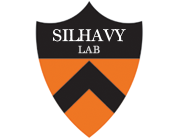Increased expression of the bifunctional protein PrlF suppresses overproduction lethality associated with exported beta-galactosidase hybrid proteins in Escherichia coli
Type
We have cloned and determined the nucleotide sequence of the prlF gene. An open reading frame predicting a 111-amino-acid protein (Mr 12,351) with an acidic carboxy terminus was identified. The DNA sequence preceding this open reading frame revealed a putative promoter and a ribosome-binding site. The nucleotide sequence of the prlF1 mutation revealed a 7-base-pair duplication resulting in a slightly smaller predicted gene product of Mr 12,009 that lacked the acidic carboxy terminus. Maxicell analysis of prlF and prlF1 subclones identified peptides of sizes similar to those predicted by the nucleotide sequences. The prlF sequence was shown to be expressed in vivo by both maxicell analysis and construction of a prlF-lacZ fusion. Two kanamycin resistance insertions within the prlF open reading frame were introduced into the chromosome, replacing the wild-type gene. In contrast to the prlF1 mutation, these insertions had no detectable effect on cell growth or on the beta-galactosidase activity or maltose sensitivity (two sensitive indicators of hybrid protein export) conferred by the lamB-lacZ42-1 gene fusion. Overproduction of the wild-type prlF gene product from a plasmid carrying an active hybrid promoter, however, conferred a prlF1 phenotype. In addition, both the prlF1 mutation and both kanamycin resistance insertions increased the beta-galactosidase activity of a prlF-lacZ fusion. These results suggest that prlF is autoregulated and that overproduction of the prlF gene product increases the export efficiency of beta-galactosidase hybrid proteins from the cytoplasm.

